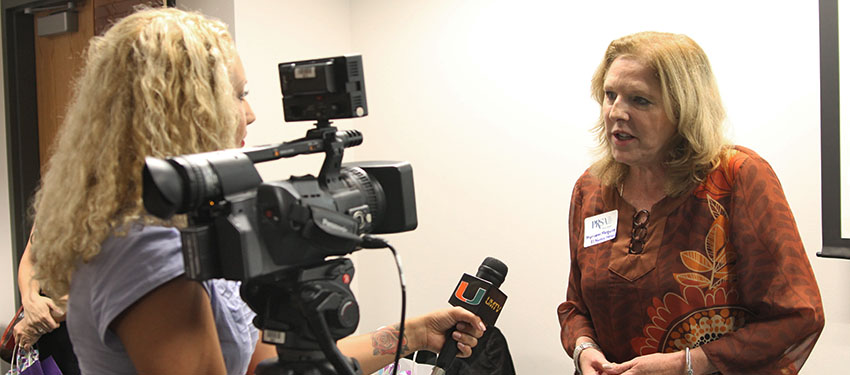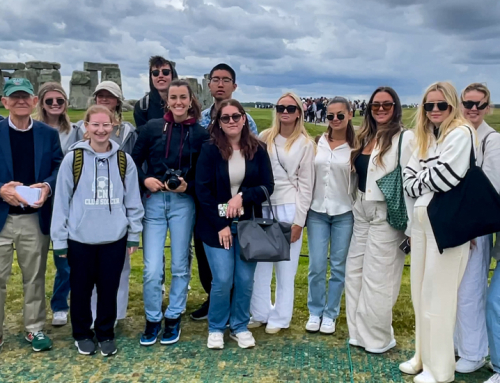The University of Miami Public Relations Student Society of America chapter (PRSSA) hosted a panel of local media leaders for the Pitch Perfect II event on Wednesday, Oct. 14, at the School of Communication.
The journalists shared their advice to a full audience of students and professional PR practitioners on how to build relations and credibility, as well as told a few horror stories of things gone wrong.
“When does a public relations practitioner become credible in your eyes?” event moderator Jorge Martinez, vice president of The Conroy Martinez Group and a UM School of Communication alumnus, posed to the panelists.
The answer was unanimous: The best way for a pitch to be received is for the public relations official to do research and be familiar with the journalist’s work.
“You build credibility from knowing the publication you are pitching to,” said Chuck Strouse, editor of Miami New Times and New Times Broward Palm Beach.
He went on describe his biggest pet peeve: When a public relations professional doesn’t even know who he or she is pitching to.
“About a dozen times a week, I get emails from someone saying ‘Dear Mr. Johnson’ —calls from someone who doesn’t know my name or doesn’t know who they are calling,” Strouse said to much laughter from the audience.
The panelists were asked to give one piece of advice they wanted every one in the room to know.
Abby Lawing, the assignment planner for CBS-4 WFOR, urged the PR professionals to always talk to the reporter.
“Even if the news is negative, always respond,” said Lawing. “At least say you don’t want to comment or ask for more time, but don’t ignore me. I will keep calling.”
The Miami Herald’s Food Editor Evan Benn suggested that if clients want to see their names on the front page of the newspaper, the best way for the PR practitioner to accomplish that is to “think like a journalist.”
The journalists also talked about the changes their industry is facing, such as declining viewership or readership. But they were optimistic about the business’ future.
“Because of the new digital phenomenon with so many new web sources, I find it interesting that clients want more and more to see a printed, published product, said Benn. “Newspapers are iconic things, and the legacy aspect of being in the newspaper, above the fold, in color, means a lot to people. Clients get excited when they’re on the front page, which I think is really cool.”
Filling out the panel was Myriam Marquez, the executive editor for El Nuevo Herald, the nation’s second-largest Spanish daily; and Curt Anderson, the legal affairs reporter for The Associated Press. Both talked about the incredible number of emails they get requesting coverage, amounting to thousands per week. But they both also praised PR professionals for finding them experts to talk to on deadline to help explain a complicated topic.
The Pitch Perfect II event is one of the many PRSSA-sponsored events hosted on campus. The pre-professional club, which is open to all students, works to bring real-world PR experiences to students. It is hosting a fundraiser at Chipotle on Oct. 21 and a tour of a local PR tech agency on Oct. 28.
Professor Heidi Carr, the faculty adviser for UM PRSSA, says that joining the society is a must for all students interested in public relations.
“We bring in people who have years and years of experience, and you get to meet them,” Carr said, adding that these meetings often lead to internships or part-time jobs. “I’m not exaggerating when I say this: This is how you get jobs today. You build a connection with people to make your résumé stand out from the other 500 the companies get. You build that one-on-one.”






